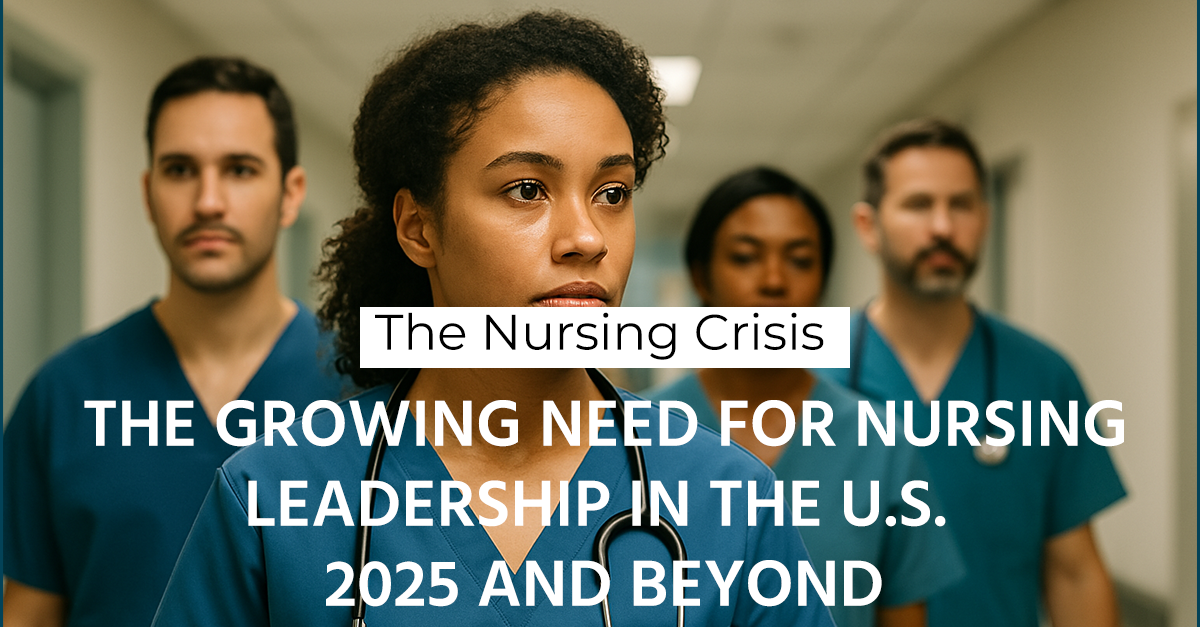
In The United States, our healthcare system is confronting a significant nursing shortage, with some projections indicating a deficit of approximately 200,000 to 450,000 registered nurses by 2025. This shortage is made worse by the aging population, as the number of Americans aged 65 and older is expected to increase from 58 million in 2022 to 82 million by 2050. Consequently, the demand for healthcare services is escalating, underscoring the critical need for robust nursing leadership to navigate these challenges effectively.(Sources:Kentucky+1NurseRegistry+1AACN)
The Growing Demand for Nursing Leadership
The healthcare landscape is evolving rapidly, requiring adep leadership to ensure quality care delivery. Nursing leaders play a pivotal role in shaping healthcare policies, implementing best practices, and mentoring the next generation of nurses. Their expertise is vital in addressing the complexities arising from the current nursing shortage and the increasing healthcare demands of an aging population.
Impact of Nursing Shortages on Healthcare Delivery
The projected shortage of RNs poses significant risks to patient care quality and safety. Insufficient staffing levels can lead to increased workloads for existing staff, higher burnout rates, and compromised patient outcomes. A report by McKinsey & Company highlights that the United States could face a shortage of 200,000 to 450,000 RNs for direct patient care by 2025, emphasizing the urgency of this issue. (Sources:Kentucky+1NurseRegistry+1)
The Role of Nursing Leadership in Mitigating Shortages
Effective nursing leadership is crucial in mitigating the adverse effects of nursing shortages. Leaders in nursing are instrumental in developing strategies to improve nurse retention, such as fostering supportive work environments, advocating for competitive compensation, and promoting professional development opportunities. Additionally, they play a key role in workforce planning, ensuring adequate staffing levels to meet patient care demands.
Educational Initiatives and Leadership Development
To address the nursing shortage, there is a pressing need to invest in nursing education and leadership development programs. The American Association of Colleges of Nursing (AACN) reports that in 2023, U.S. nursing schools turned away 65,766 qualified applications from baccalaureate and graduate nursing programs due to insufficient faculty, clinical sites, and resources. Enhancing educational infrastructure and expanding leadership training programs are essential steps toward building a resilient nursing workforce capable of meeting future healthcare challenges (Sources:.AACN+1Nightingale College+1)
The reality is…
The anticipated nursing shortages in the United States by 2025 and beyond present a formidable challenge to the healthcare system. However, by recognizing the indispensable role of nursing leadership and investing in strategies to bolster the nursing workforce, it is possible to mitigate these challenges. Empowering nursing leaders with the necessary tools and support will be pivotal in ensuring the delivery of high-quality healthcare in the years to come.

One response to “Nursing Shortages: A Growing Crisis”
Hi, this is a comment.
To get started with moderating, editing, and deleting comments, please visit the Comments screen in the dashboard.
Commenter avatars come from Gravatar.